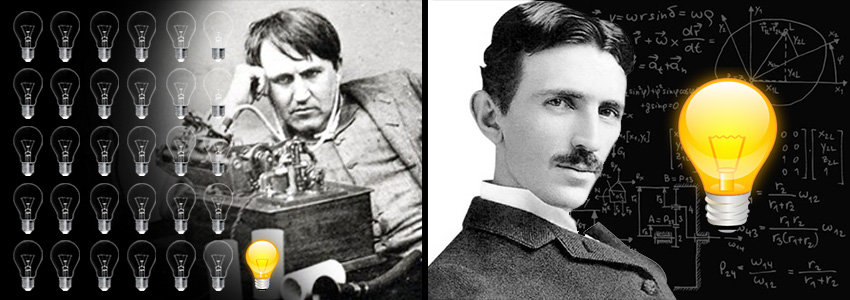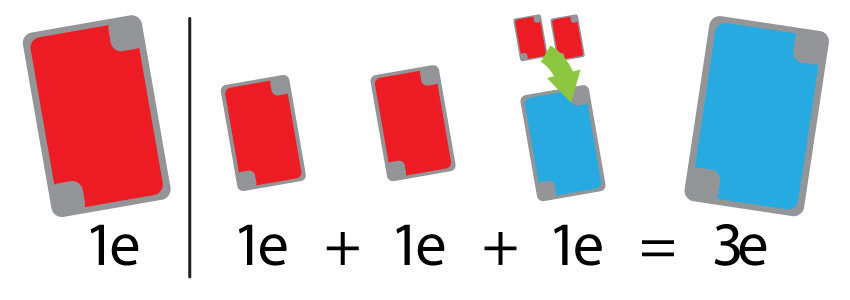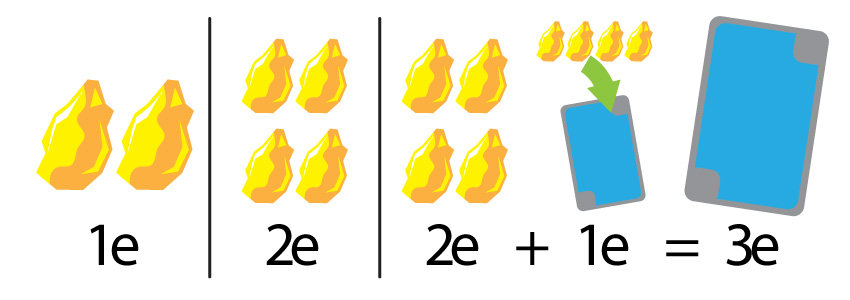
How do you know the value of a card, or resource in a game you’re designing? I see this question pop up from time to time, and it’s a good one to ask. The designer is trying to figure out how to balance to their game.
The most popular answer I see appear when this question is asked is, “playtesting”. This answer is incorrect. In fact, it points out a growing misconception of the function of playtesting. Playtesting should not be part of design, it should be part of refinement or development. Playtesters should not be helping you design a game. If you’re doing this, you should rethink your methods.
TWO METHODS
Most people have heard of the two scientists, Edison and Tesla. Their rivalry is commonly known, but what isn’t fully appreciated is the difference between their methods. Tesla was a highly intelligent man. He used imagination, theory, and math to calculate what would happen in his experiments before physically trying them out. This resulted in having to create very few physical experiments to reach a working solution.
Edison famously created over 1000 different lightbulbs before finding success. While this story is typically used to illustrate the “never give up” moral, compare it to Tesla’s methods to find a different lesson. From Tesla’s point of view, Edison wasted a great deal of time and materials on those 1000 plus lightbulbs. He should have been able to figure out ahead of time what would have worked.

PLAYTESTING IS NOT HOW YOU DETERMINE BALANCE
I subscribe to the Tesla method of designing games. A designer works out the correct balance of a game before it hits the playtesting table. This should result in only a few iterations of your prototype and faster design time. Using Edison’s method, a designer could potentially make an infinite number of prototypes without finding balance. This could result in a designer giving up or worse, creating a game that isn’t balanced.
Playtesters are not precise. Their evaluation of an element in the game is from a limited view point. If they spend most of their efforts working towards one victory path, then they will devalue an element that works for a different victory path.
For example, if I, as a playtester, am trying to win a game by having the most rubies, then I see a card that awards emeralds, I will value it less than the player who has chosen emeralds as their path to victory. Most playtesters aren’t game designers and won’t understand that their anecdotal experience shouldn’t value a game’s element.
E IS FOR EFFORT
When looking for balance and values in a game, there is only one answer. Math. Everything can be balanced mathematically using a player’s “effort” (e). Effort being defined as the amount of turns it takes a player to achieve a goal starting with nothing.
For example, if a player can, on their very first turn, pick a red card up for free on their turn, then that card is worth 1e (1 turn or effort). It only takes the player 1e to pick up that card starting with nothing.
However, if a blue card costs two red cards to take, you now know the blue card is worth 3e. 1e to pick up a red card, another 1e to pick up a second red card, and finally a third e to spend those red cards and pick up the blue card.

Now imagine we throw Gold as a resource into the mix. You can spend 1 turn gathering 2 Gold. Now we know that 1 Gold is worth 0.5e (half a turn). Meaning a red card should be free and a blue card should cost 4 Gold (4 Gold = 2e and spending that gold to get the blue card is the third e).

SUPPLY AND DEMAND
Of course, Effort is only one variable needed to determine balance. In the example above, this only works if all resources and cards are infinite. If there are only 10 gold but 20 red cards for instance, having 2 Gold may be more valuable than having a red card, even though both are worth 1e.
I say “may be more valuable” because as the example stands now, 2 gold and 1 red card are interchangeable. There’s no reason to value Gold over a red card, even though there’s less. Of course, a game is more intricate than this example, and one would expect that Gold would be used where red cards could not and vice versa. In that case, the gold would be more valuable, but only to a player who would actively be using the Gold where red cards cannot be used.
Adding Supply and Demand to the equation makes things more complicated, but take it one step at a time. Use your imagination to evaluate different paths a player can take.
WHERE DOES PLAYTESTING COME IN?
Playtesting is important to the process of game making, but not as a tool for finding balance. Instead, it should be a tool for finding “perceived balance”.
As I said before, playtesters have a singular point of view when it comes to balance in a game. Often a playtester might not see the value in an element because they haven’t tried or noticed a different path to victory that would utilize that element.
If you hear one playtester say that a specific element isn’t as valuable as the game suggests, you shouldn’t change the value of that card, but you should record that response. If it happens many separate times from other sources, then you may need to adjust your game to make that element appear to be as balanced as it actually is.
A PERCEPTION EXAMPLE
The average of 2 dice is “7”. The average of 10 dice is “35”. If you told a player that they must get close to average on their roll, they would usually opt to roll 2 dice instead of the 10, but that would be an unwise choice.
The more dice you have, the more likely you are to hit close to the average. However, players typically see dice as units of randomness. The more dice you throw into the mix, the more out of control they feel. This is because their perception of how random works is different from how it actually functions.

This is what playtesting is for. In the end, we aren’t creating a mathematical formula, we’re creating an experience. The more mathematically accurate that experience is, the more likely you’ll have consistent experiences throughout plays. The value of those experiences though, the “fun”, can only be determined by playtesting.
CONCLUSION
Use a player’s effort, supply and demand, and simple functions to determine value and balance in your game. That will ensure that each player can have a very similar experience.
Use playtesting to make sure that “similar experience” is enjoyable for the players.








